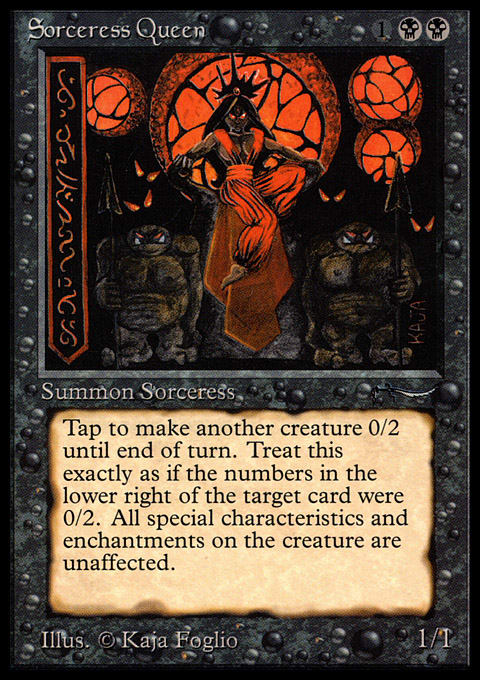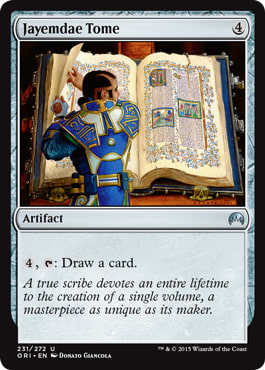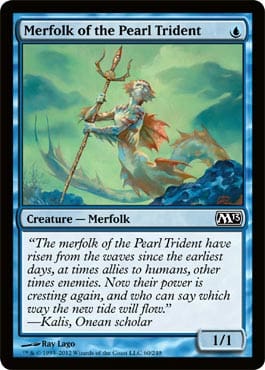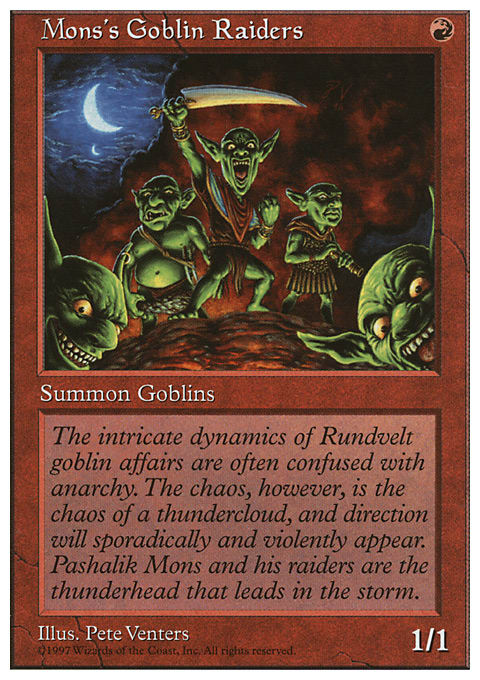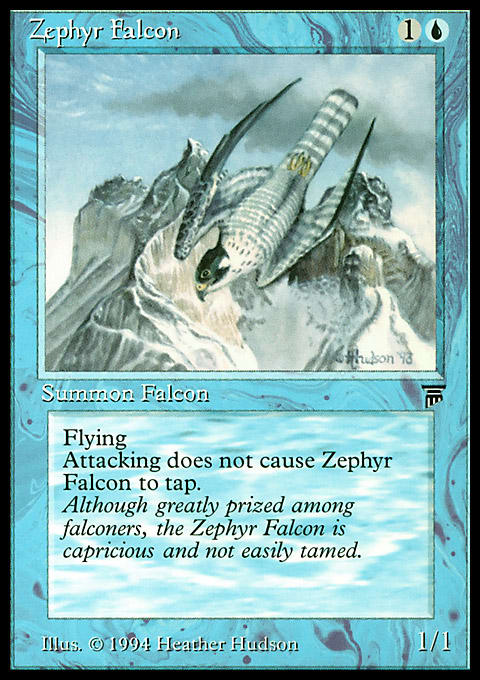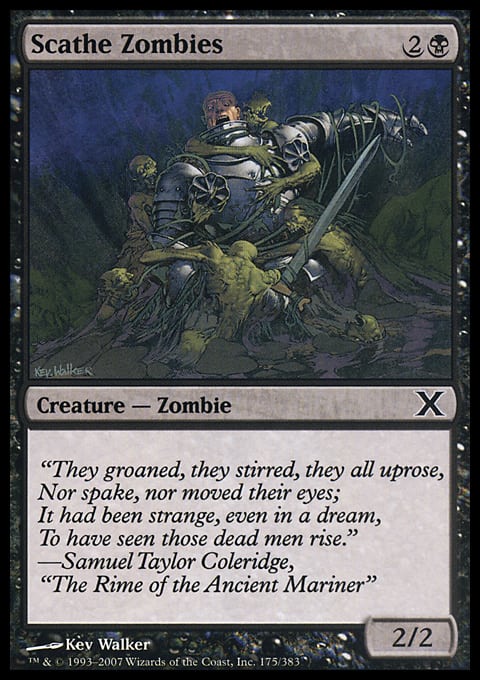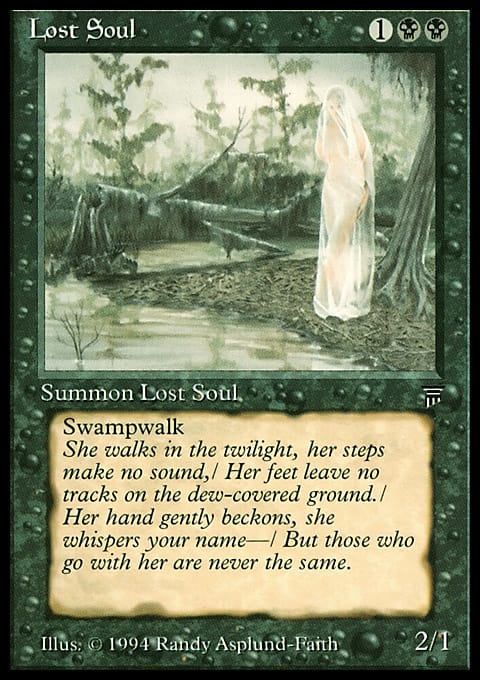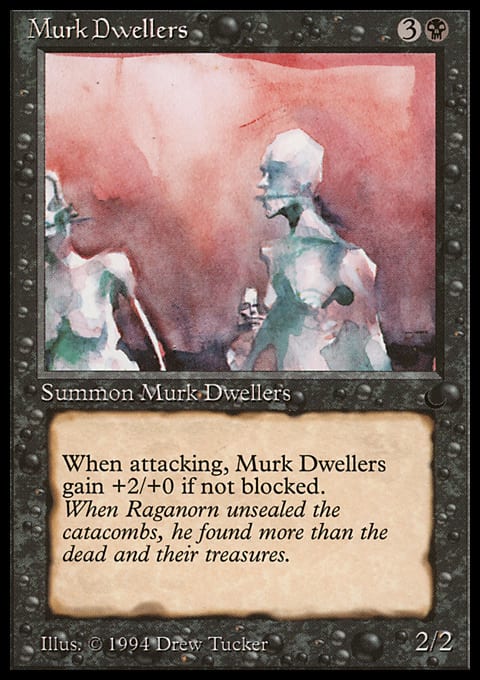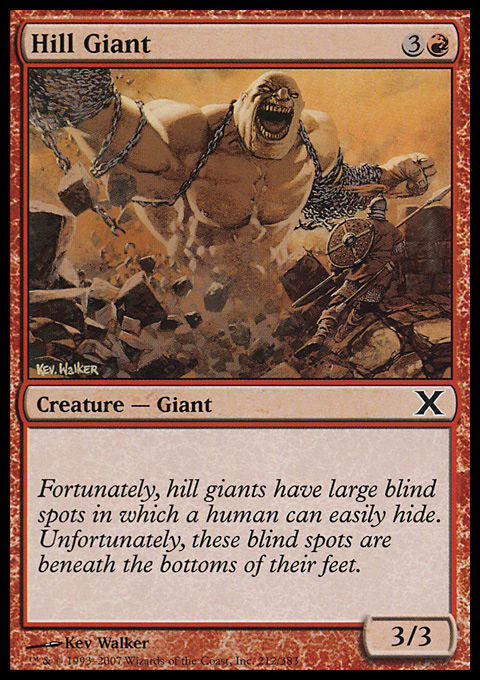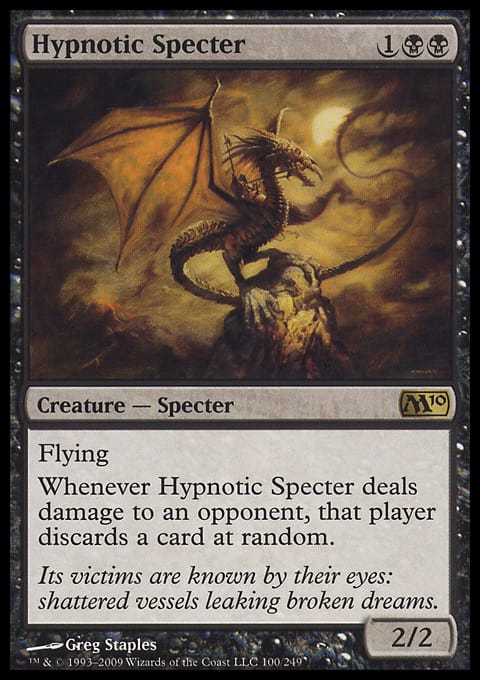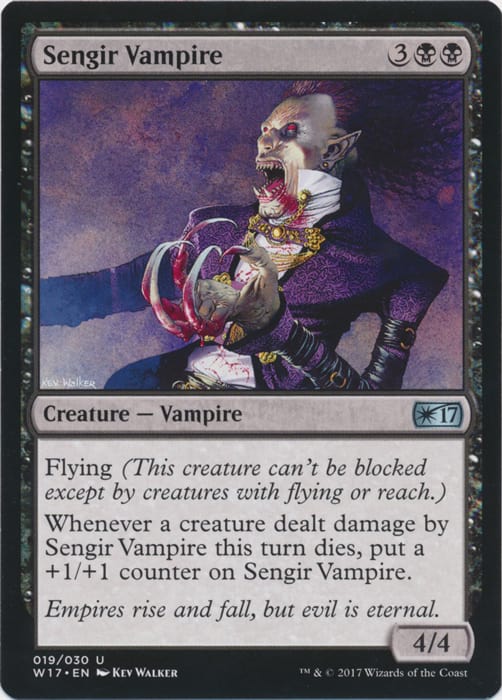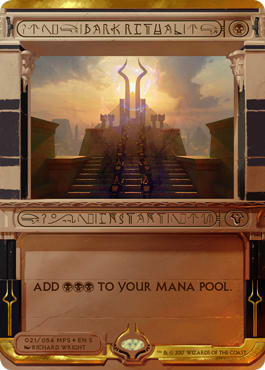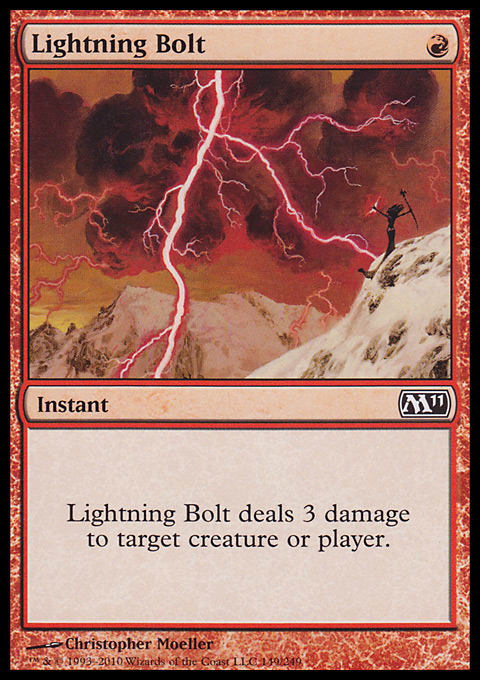Flavorfully, the set depicted the battle between unfortunately-named twins Zakk and Kazz (again, this was the 90’s). Kazz’s deck was a Grixis list, Zakk’s Abzan. And in the comments of the article came this fun suggestion from Gathering Magic reader Laurent Lignon: to ‘meddle’ the decks!
For newer readers, the Meddling series is where I take a Preconstructed deck, strip it down to its base essence, and rebuild it in accordance with a couple of Golden Rules designed to keep the finished product affordable and readily available. The first Golden Rule states that while we can take any number of cards out of the stock list, we can only replace them with commons and uncommons. The second Rule is that we can only use cards from the set r sets present in the deck. In this case, that means we’re limited to Fourth Edition.
Fourth Edition was the successor to Revised, and the first Core Set to be given a numeric name. Fourth Edition stripped out fifty-one cards from Revised. In some cases, this was because they were just too powerful, such as in the case of the ten-card duel land cycle (Bayou, Tropical Island, and friends). Others like Lance likely ended up on the cutting room floor for precisely the opposite reason, while cards like Sedge Troll and Contract from Below were casualties of the game advancing its development and maturation over time.
To replace them, Wizards of the Coast dug deep into expansions Legends and The Dark to bring a further 122 cards into the staple environment. This larger size was the result of Magic shifting basic lands to their own printing sheet for the first time, which let them pack more cards into the set itself. As we’ll see, a lot of the ‘classic’ cards we associate with Magic still remain — and we’ll make making use of many of them in our meddling.
The deck we’ll be tuning up today is Kazz’s deck, the Grixis one. Let’s start with a look at the original deck.
Kazz?s Deck ? Rivals Boxed Set | Wizards of the Coast
- Creatures (17)
- 1 Hill Giant
- 1 Ironclaw Orcs
- 1 Lost Soul
- 1 Merfolk of the Pearl Trident
- 1 Mons's Goblin Raiders
- 1 Orcish Artillery
- 1 Sorceress Queen
- 2 Murk Dwellers
- 2 Scathe Zombies
- 2 Vampire Bats
- 2 Zephyr Falcon
- 1 Battering Ram
- 1 Clockwork Beast
- Spells (15)
- 1 Power Sink
- 1 Terror
- 1 Twiddle
- 2 Unsummon
- 1 Detonate
- 1 Fireball
- 1 Pyrotechnics
- 2 Disintegrate
- 1 Cursed Land
- 1 Energy Flux
- 1 Feedback
- 1 Orcish Oriflamme
- 1 Jayemdae Tome
Usually we start out meddling by looking at the theme the deck presents, to give us some idea of what we’d like to see the final form of the deck look like. The rares are often a good indicator of this, and in Kazz’s case that’s sort of true. The rares are Jayemdae Tome, Sorceress Queen, and Clockwork Beast. See the connection?
Yeah, me neither.
Nevertheless, that’s fairly indicative of the aim of the deck overall. There’s no real theme at work here, so much as a vehicle for showing off the different things Magic has to offer. While neither deck has a lot in the way of top-down design, you still have a large variety of creatures, instants, sorceries, enchantments, and artifacts — just the thing to highlight diversity.
So it looks like we’re more after a “good stuff” sort of build, where we take some of the best of what’s available and augment it. To do that, we’re first going to make some room, so let’s get out the scalpel and start cutting!
The first to go are the deck’s 1-drops. While you could make a case for the Vampire Bats given that you can pump their power, a three-color deck is not the right environment for them. As for the Merfolk of the Pearl Trident and Mons's Goblin Raiders, those get an immediate gong. Garfield & The Gang might have had visions of weenie creatures and buffing lords, but in something like this they’re the worst kind of dead weight — mediocre early, and plain dreadful when drawn later in the game.
Moving on to the 2-drops, we’ll be nuking these from orbit too — just to be sure. The Ironclaw Orcs aren’t dreadful if we intend to be attacking with them a lot, since their drawback is a blocking restriction, but even a two-mana 2/2 isn’t really bringing much to the table here. It’s worth noting that Fourth Edition — just as the preceding Limited Editions — are a curious environment for creatures. The usual spread and balance we’re accustomed to in this modern era wasn’t present then, and creatures overall tended to be a bit weaker. This is going to be pushing us to a slower deck, where we can win through quality over pure speed.
That also sees off the Battering Ram, a 1/1 creature with banding on the in-swing and a wonky anti-Wall clause that is only relevant in this release because Zakk’s deck packs a singleton Wall of Bone. Finally, we bid adieu to the pair of Zephyr Falcons. Like the Orcs, these 1/1 evasive, vigilant creatures aren’t terrible but also like the Orcs they don’t carry much weight. Fly free, little birds!
We start to find some keepers in amongst the 3-drops, though. Since we seldom discard a rare, which can be fun and splashy even when it’s not a perfect fit for a deck, we want to hold onto our Sorceress Queen. But there’s another choice here that’s very solid as well, and that’s the Orcish Artillery. Disdain for these sorts of cards was fairly prevalent early on in Magic, with a prevailing thought being “who wants a card that damages themselves?”
Players that progressed to seeing their life total not as something to be hoarded, but rather a resource to be spent would take another look, however, realizing quite rightly that if they use the Artillery to pick off a looming evasive 2/2 threat, they just saved themselves a point of life over two turns. Savings!
The Artillery also forms a combo with the Sorceress Queen, letting you destroy your opponent’s best creature each turn at the cost of just 3 life. It may not be quite as good as a Royal Assassin, but it’s still a way to solve large threats at a reasonable cost.
The other offerings here are less helpful. Scathe Zombies are a low watermark for creature efficiency in Black, being a three-mana 2/2 that Black was stuck with for a very long time. Compare that to the Dhund Operative from Kaladesh, which is a two-mana 2/2 with upside, and you’ll get a sense of the slow uptick of power level of creatures over the history of the game. Scathe Zombies are a fossil card, and we have little need for them here.
As for the Lost Soul, the Zombies can take them with ‘em. Not only is it a feeble body with a very conditional evasion for 3 mana, but it needs two Black mana to cast. That’s an interesting thing about many of these early cards, which are weighed more heavily in their color than you often see. Modern Magic uses a heavy color component in its costing to ensure cards aren’t easily splashable, but this brittle 2/1 isn’t something I’d think you’d want to ever splash. Or even drizzle.
Aside from the Clockwork Beast, which is another rare card with a secure position, we’re scrapping the 4-drops en masse here too — a pair of Murk Dwellers and a Hill Giant. The Murk Dwellers have an interesting ability that incentivizes them being blocked, but don’t have much in the way of hardiness that helps ensure a long and useful life. The Hill Giant, meanwhile, is a lesson in mediocrity. By the standards of the day it wasn’t a terrible card, and even now the Hill Giant teeters on the fence between being ‘just right’ (as evidenced by versions like Canyon Minotaur and Lagac Lizard) and warranting a dash of upside (from Raging Spirit to Spontaneous Artist).
So now that we’ve cut back the weeds, what do we want to plant in its place? For all the inefficiency clogging up the barracks, we do have a few gems left over we’d like to build around. Though this skews us into a more midrange mode of deck, we’d still like to have a little muscle up-front. Enter the Black Knight, a 2/2 with first strike and protection from White. The color-hosing is a nice bonus, but the Knight is fairly solid on its own. Thanks to first strike, it can even drop heftier targets like a Craw Wurm unscathed if you happen to have fielded some Artillery — or the Queen.
Naturally we have the Artillery and Sorceress Queen at the 3-drop slot, but there’s another brutal inclusion we’d be criminal to overlook: Hypnotic Specter. Once one of the most hated cards in all of Magic, it took Wizards awhile to realize that the Specter wasn’t as bad as its reputation. Rather, it was the enabling power of Dark Ritual bringing it out on turn one that was the real threat, and we’ll be taking full advantage of this combination. We’ll take four “Hippies,” gladly.
Blue had some interesting things going in the aerial department back then, with cards like Phantasmal Forces, Phantom Monster, and Air Elemental. The higher power of the Forces is compelling, but the drawback of tying up a mana is significantly less so. Air Elemental is clearly the strongest of the lot, but we have better options for that much mana. The Monster hits the sweet spot here, and we’ll take a pair of them for some old-fashioned, no-frills evasive damage.
The 5-drop slot was where Magic liked to stick its Elementals. The Air Elemental was a 4/4 flier, while Red had the significantly worse Earth Elemental (which was biased for toughness) and the Fire Elemental (which opted for the extra point of power). Given the utility of evasion, the Air Elemental is the clear winner here even with the negligible reduction in stats — but here Black had the best option of the lot: Sengir Vampire. The Vampire was substantial enough to get bumped up to rare starting with Torment, though it eventually fell back down to uncommon, and we’ll take a set of them. That’s a little heavier than we might ordinarily like to go with expensive closers, but since we’re going to be lining up with Dark Rituals anyway, might as well get our money’s worth. And who knows, play enough games and we might ultimately live the dream of turn-1 Hypnotic Specter chased by a turn-3 Sengir Vampire.
Now that we’ve compiled our creatures, all that’s left is the spells. This being Fourth Edition, this is somewhat reminiscent of that scene in Boondock Saints where the boys go shopping for weapons. Dark Rituals? Four please. Lightning Bolts? Four of them as well. Terror? Sure, let’s do it. And just because we can, how about a couple of Counterspells as a tough of insurance against wipes or removal? (For those who enjoy a different kind of heartbreak for your opponent, feel free to substitute in Control Magic instead).
Finally, a pair of Fireballs to give us some reach and versatility. The Fireballs also make for a fine mana dump for any extra Dark Rituals we might happen to draw into later in the game, and a way to burn out our opponent if the red zone stalls out.
While overall it’s a touch greedy in a world where lower-rarity mana-fixing wasn’t a staple, this deck offers some classic powerful cards from Magic’s yesteryear that would be fun to play again.
Here’s the final list!
Kazz?s Deck, Meddled ? 4th Edition Preconstructed| Jay Kirkman
- Creatures (20)
- 1 Sorceress Queen
- 2 Phantom Monster
- 4 Black Knight
- 4 Hypnotic Specter
- 4 Orcish Artillery
- 4 Sengir Vampire
- 1 Clockwork Beast
- Spells (16)
- 2 Counterspell
- 3 Terror
- 4 Dark Ritual
- 4 Lightning Bolt
- 2 Fireball
- 1 Jayemdae Tome
Thanks for reading, and as always, comments are welcome! I’d like to see how you might have built this, given the large amount of ground available in Fourth Edition.














